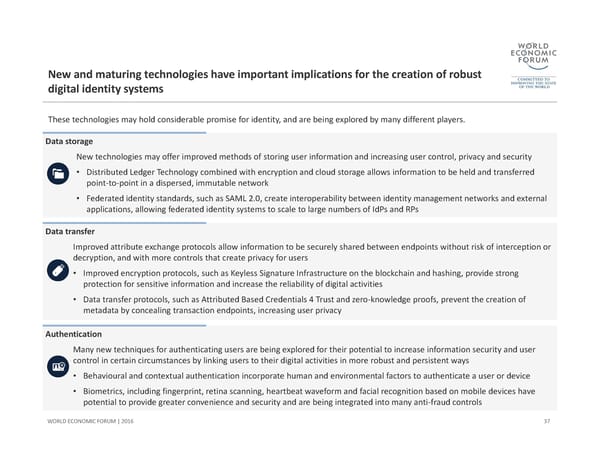New and maturing technologies have important implications for the creation of robust digital identity systemsThese technologies may hold considerable promise for identity, and are being explored by many different players. 37 WORLD ECONOMIC FORUM | 2016 Data transfer Improved attribute exchange protocols allow information to be securely shared between endpoints without risk of interception or decryption, and with more controls that create privacy for users •Improved encryption protocols, such as Keyless Signature Infrastructure on the blockchain and hashing, provide strong protection for sensitive information and increase the reliability of digital activities •Data transfer protocols, such as Attributed Based Credentials 4 Tr u s t and zero‐knowledge proofs, prevent the creation of metadata by concealing transaction endpoints, increasing user privacy Data storage New technologies may offer improved methods of storing user information and increasing user control, privacy and security •Distributed Ledger Technology combined with encryption and cloud storage allows information to be held and transferred point‐to‐point in a dispersed, immutable network •Federated identity standards, such as SAML 2.0, create interoperability between identity management networks and external applications, allowing federated identity systems to scale to large numbers of IdPs and RPs Authentication Many new techniques for authenticating users are being explored for their potential to increase information security and user control in certain circumstances by linking users to their digital activities in more robust and persistent ways •Behavioural and contextual authentication incorporate human and environmental factors to authenticate a user or device • Biometrics, including fingerprint, retina scanning, heartbeat waveform and facial recognition based on mobile devices have potential to provide greater convenience and security and are being integrated into many anti‐fraud controls
 A Blueprint for Digital Identity Page 37 Page 39
A Blueprint for Digital Identity Page 37 Page 39